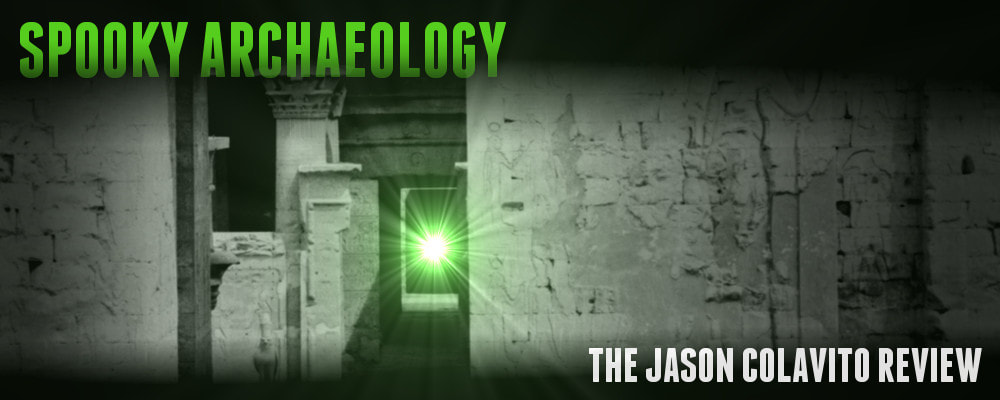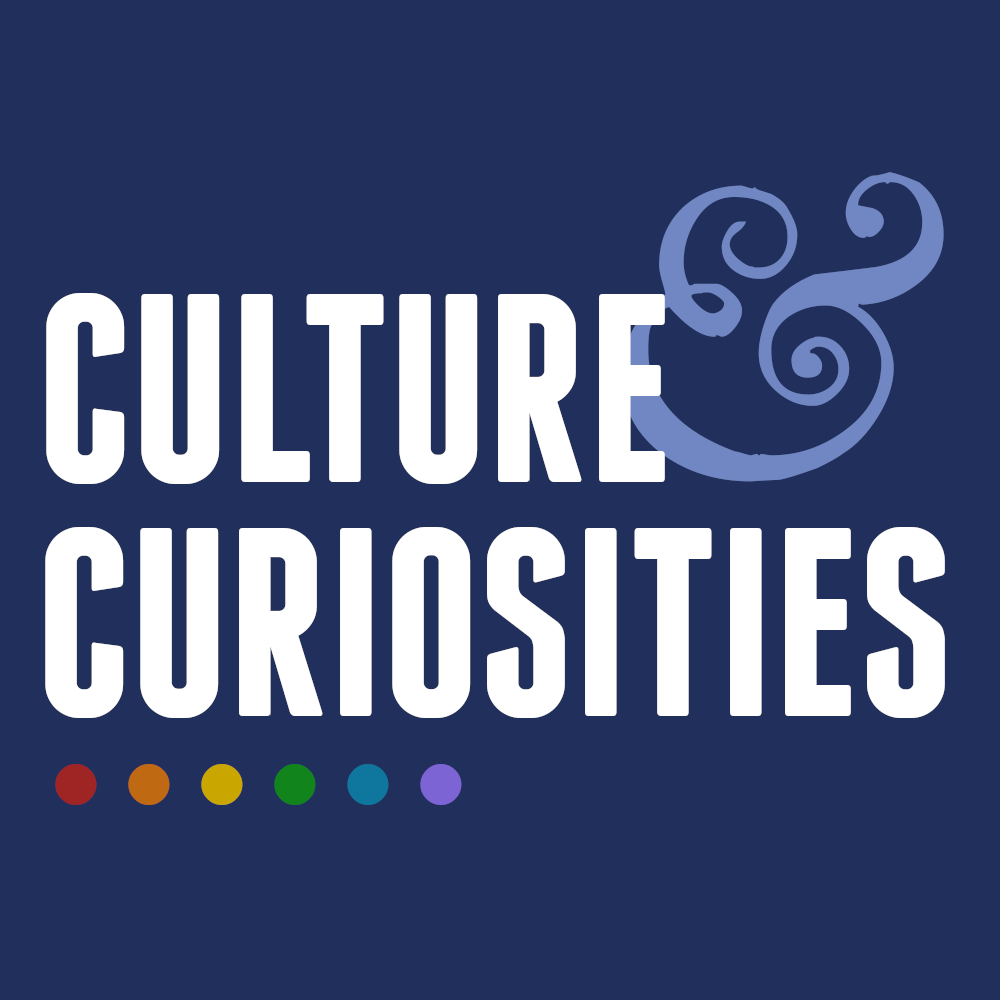|
Spooky Archaeology: Myth and the Science of the Past Jeb J. Card | 424 pages | University of New Mexico Press | June 2018 | ISBN 978-0-8263-5965-0 | $75.00 In H. P. Lovecraft’s 1927 novella The Case of Charles Dexter Ward, the warlock Jedediah Orne of Salem provided some sage advice for anyone who would attempt to resurrect the past: “I say to you againe, doe not call up Any that you can not put downe; by the Which I meane, Any that can in Turne call up somewhat against you, whereby your Powerfullest Devices may not be of use.” This sense that the past is a dangerous territory that can disturb the present is an essential element of Gothic fiction, but it is also an underlying tension that has troubled the field of archaeology since it began to separate from antiquarianism in the nineteenth century. What would unearthing the past reveal, and how might it challenge the assumptions of the present?
17 Comments
Six months ago, I reviewed science writer Andrew Lawler’s new book on the lost colony of Roanoke, The Secret Token, and I expressed some concerns about the content of the book. Lawler, who is fresh from a book tour promoting the volume, read the review, and wanted a chance to respond. Today, I present Andrew Lawler’s response to my review. After his comments I will add a few thoughts.
Note: A publisher has expressed interest in my book about the history of the Mound Builder myth and has asked for the full manuscript. However, in order to get the manuscript ready for review, I have to do some work with formatting, especially converting the footnotes into a bibliography, so I will be taking the day off of writing the blog while I work on this. In the meantime, please enjoy this rerun post from November 2012. One weird claim from Erich von Däniken’s Chariots of the Gods has always bothered me, and I’ve never been able to figure out just where it came from. In the book, von Däniken claims that Egypt’s Great Pyramid lies at the “center of gravity” for all earth’s land:
Bioarchaeologist Steph Halmhofer posted to Twitter an excerpt from National Geographic’s recent “special issue” on “Mysteries of History,” and the cover is a depressing look into what journalists think qualifies as “history,” and basically it’s mythology. The three stories teased on the cover are Atlantis, King Arthur, and the Curse of the Hope Diamond. Of the three, Atlantis is fictitious, King Arthur is a myth (or at best a composite legend), and the Hope Diamond curse is fictional. It’s good, I guess, that the magazine asks “What’s real, what’s fantasy, and what’s still a mystery,” but it’s sad that the only “history” on the cover is the picture of Stonehenge.
For the past week or so, I’ve been working on an interesting project that turned out to be much larger than I intended it to be. One of the unsolved questions surrounding the compendium of medieval legends about Egypt known variously as the Akhbar al-zaman (History of Time) and the Digest of Wonders is the question of who wrote it. The manuscripts of the book give two different authors with no great certainty that either is the actual author. The first attribution is to al-Mas‘udi, an early medieval historian who wrote a book called the Akhbar al-zaman, but which appears to have had almost completely different content. The second is Ibrahim ibn Wasif Shah, also known as al-Wasifi or in the West as Alguazif, about whom almost nothing is known except that he lived two centuries too late to have written the book that otherwise passes under his name. The situation has not changed since Baron Bernard Carra de Vaux translated the Akhbar al-zaman into French in 1898 and found himself unable to name an author:
This week Scottish television personality and sometime Ancient Aliens talking head Ashley Cowie attempted to explore the origins of vampires for Ancient Origins. It did not go particularly well, not least because Cowie frames his discussion around Bram Stoker’s 1897 novel Dracula without, apparently, having read the book and without understanding much about its origins. Probably everything you need to know can be summed up in the fact that he traces vampires in popular entertainment to Stoker and then focuses exclusively on movie and TV vampires, despite the fact that Stoker drew on decades of Gothic vampire fiction (Le Fanu’s “Carmilla” and Polidori’s “The Vampyre” most prominently), and vampire entertainments go back in European folklore at least to the stories told for titillation and sensation about the great vampire outbreak of the late 1600s and early 1700s.
Last Friday, Brent Swancer of Mysterious Universe posted an article discussing the famed Emerald Tablet, a medieval Arabic Hermetic text, perhaps of Late Antique origin, that gained fame in the West as a distillation of the secrets of Hermeticism and alchemy. But it was also pretty clear that he hadn’t done much research beyond Wikipedia for the Emerald Tablet, since his article betrayed little understanding of the text or its transmission across the centuries. He even refers to the extant text as a “section,” as though there were much more. It also doesn’t help that in places he conflates the medieval Emerald Tablet with the twentieth century “Emerald Tablets of Thoth the Atlantean,” a set of modern fakes cribbed from H. P. Lovecraft, Frank Belknap Long, and other weird fiction writers by Maurice Doreal. He also writes that the object is “referred to variously as the Smaragdine Table, Tabula Smaragdina, or more commonly simply the Emerald Tablet,” apparently without knowing that smaragdus is the Latin word for “emerald” (Greek: σμάραγδος) and the three titles of the tablet are simply the Latin original, an anglicization of the Latin, and an English translation of the Latin.
After a great deal of hard work, I completed my translation of the Hermetic history of the Giants given in Alfonso X of Castile’s General Estoria, composed in the late 1200s. This undertaking was more involved than I expected, both because I had to learn a new language—medieval Castilian, also known as Old Spanish—in order to read it, and because Alfonso’s writers used complex grammar, pointless repetition, and ambiguous vocabulary that made it difficult to understand exactly what was being said in some places. A few of the words used can’t be found in dictionaries of Old Spanish and only rarely appear in other medieval documents, making them quite challenging to decipher. As a result, I am a little less certain about the particulars of this translation than I am for most, but the overall meaning is clear.
|
AuthorI am an author and researcher focusing on pop culture, science, and history. Bylines: New Republic, Esquire, Slate, etc. There's more about me in the About Jason tab. Newsletters
Enter your email below to subscribe to my newsletter for updates on my latest projects, blog posts, and activities, and subscribe to Culture & Curiosities, my Substack newsletter.
Categories
All
Terms & ConditionsPlease read all applicable terms and conditions before posting a comment on this blog. Posting a comment constitutes your agreement to abide by the terms and conditions linked herein.
Archives
July 2024
|
- Home
- Blog
- Books
-
Articles
-
Newsletter
>
- Television Reviews >
- Book Reviews
- Galleries >
- Videos
-
Collection: Ancient Alien Fraud
>
- Chariots of the Gods at 50
- Secret History of Ancient Astronauts
- Of Atlantis and Aliens
- Aliens and Ancient Texts
- Profiles in Ancient Astronautics >
- Blunders in the Sky
- The Case of the False Quotes
- Alternative Authors' Quote Fraud
- David Childress & the Aliens
- Faking Ancient Art in Uzbekistan
- Intimations of Persecution
- Zecharia Sitchin's World
- Jesus' Alien Ancestors?
- Extraterrestrial Evolution?
- Collection: Skeptic Magazine >
- Collection: Ancient History >
- Collection: The Lovecraft Legacy >
- Collection: UFOs >
- Scholomance: The Devil's School
- Prehistory of Chupacabra
- The Templars, the Holy Grail, & Henry Sinclair
- Magicians of the Gods Review
- The Curse of the Pharaohs
- The Antediluvian Pyramid Myth
- Whitewashing American Prehistory
- James Dean's Cursed Porsche
-
Newsletter
>
-
The Library
-
Ancient Mysteries
>
-
Ancient Texts
>
- Mesopotamian Texts >
-
Egyptian Texts
>
- The Shipwrecked Sailor
- Dream Stela of Thutmose IV
- The Papyrus of Ani
- Classical Accounts of the Pyramids
- Inventory Stela
- Manetho
- Eratosthenes' King List
- The Story of Setna
- Leon of Pella
- Diodorus on Egyptian History
- On Isis and Osiris
- Famine Stela
- Old Egyptian Chronicle
- The Book of Sothis
- Horapollo
- Al-Maqrizi's King List
- Teshub and the Dragon
- Hermetica >
- Hesiod's Theogony
- Periplus of Hanno
- Ctesias' Indica
- Sanchuniathon
- Sima Qian
- Syncellus's Enoch Fragments
- The Book of Enoch
- Slavonic Enoch
- Sepher Yetzirah
- Tacitus' Germania
- De Dea Syria
- Aelian's Various Histories
- Julius Africanus' Chronography
- Eusebius' Chronicle
- Chinese Accounts of Rome
- Ancient Chinese Automaton
- The Orphic Argonautica
- Fragments of Panodorus
- Annianus on the Watchers
- The Watchers and Antediluvian Wisdom
-
Medieval Texts
>
- Medieval Legends of Ancient Egypt >
- The Hunt for Noah's Ark
- Isidore of Seville
- Book of Liang: Fusang
- Agobard on Magonia
- Book of Thousands
- Voyage of Saint Brendan
- Power of Art and of Nature
- Travels of Sir John Mandeville
- Yazidi Revelation and Black Book
- Al-Biruni on the Great Flood
- Voyage of the Zeno Brothers
- The Kensington Runestone (Hoax)
- Islamic Discovery of America
- The Aztec Creation Myth
-
Lost Civilizations
>
-
Atlantis
>
- Plato's Atlantis Dialogues >
- Fragments on Atlantis
- Panchaea: The Other Atlantis
- Eumalos on Atlantis (Hoax)
- Gómara on Atlantis
- Sardinia and Atlantis
- Santorini and Atlantis
- The Mound Builders and Atlantis
- Donnelly's Atlantis
- Atlantis in Morocco
- Atlantis and the Sea Peoples
- W. Scott-Elliot >
- The Lost Atlantis
- Atlantis in Africa
- How I Found Atlantis (Hoax)
- Termier on Atlantis
- The Critias and Minoan Crete
- Rebuttal to Termier
- Further Responses to Termier
- Flinders Petrie on Atlantis
- Amazing New Light (Hoax)
- Lost Cities >
- OOPARTs
- Oronteus Finaeus Antarctica Map
- Caucasians in Panama
- Jefferson's Excavation
- Fictitious Discoveries in America
- Against Diffusionism
- Tunnels Under Peru
- The Parahyba Inscription (Hoax)
- Mound Builders
- Gunung Padang
- Tales of Enchanted Islands
- The 1907 Ancient World Map Hoax
- The 1909 Grand Canyon Hoax
- The Interglacial Period
- Solving Oak Island
-
Atlantis
>
- Religious Conspiracies >
-
Giants in the Earth
>
-
Fossil Origins of Myths
>
- Fossil Teeth and Bones of Elephants
- Fossil Elephants
- Fossil Bones of Teutobochus
- Fossil Mammoths and Giants
- Giants' Bones Dug Out of the Earth
- Fossils and the Supernatural
- Fossils, Myth, and Pseudo-History
- Man During the Stone Age
- Fossil Bones and Giants
- Mastodon, Mammoth, and Man
- American Elephant Myths
- The Mammoth and the Flood
- Fossils and Myth
- Fossil Origin of the Cyclops
- History of Paleontology
- Fragments on Giants
- Manichaean Book of Giants
- Geoffrey on British Giants
- Alfonso X's Hermetic History of Giants
- Boccaccio and the Fossil 'Giant'
- Book of Howth
- Purchas His Pilgrimage
- Edmond Temple's 1827 Giant Investigation
- The Giants of Sardinia
- Giants and the Sons of God
- The Magnetism of Evil
- Tertiary Giants
- Smithsonian Giant Reports
- Early American Giants
- The Giant of Coahuila
- Jewish Encyclopedia on Giants
- Index of Giants
- Newspaper Accounts of Giants
- Lanier's A Book of Giants
-
Fossil Origins of Myths
>
-
Science and History
>
- Halley on Noah's Comet
- The Newport Tower
- Iron: The Stone from Heaven
- Ararat and the Ark
- Pyramid Facts and Fancies
- Argonauts before Homer
- The Deluge
- Crown Prince Rudolf on the Pyramids
- Old Mythology in New Apparel
- Blavatsky on Dinosaurs
- Teddy Roosevelt on Bigfoot
- Devil Worship in France
- Maspero's Review of Akhbar al-zaman
- The Holy Grail as Lucifer's Crown Jewel
- The Mutinous Sea
- The Rock Wall of Rockwall
- Fabulous Zoology
- The Origins of Talos
- Mexican Mythology
- Chinese Pyramids
- Maqrizi's Names of the Pharaohs
-
Extreme History
>
- Roman Empire Hoax
- American Antiquities
- American Cataclysms
- England, the Remnant of Judah
- Historical Chronology of the Mexicans
- Maspero on the Predynastic Sphinx
- Vestiges of the Mayas
- Ragnarok: The Age of Fire and Gravel
- Origins of the Egyptian People
- The Secret Doctrine >
- Phoenicians in America
- The Electric Ark
- Traces of European Influence
- Prince Henry Sinclair
- Pyramid Prophecies
- Templars of Ancient Mexico
- Chronology and the "Riddle of the Sphinx"
- The Faith of Ancient Egypt
- Remarkable Discoveries Within the Sphinx (Hoax)
- Spirit of the Hour in Archaeology
- Book of the Damned
- Great Pyramid As Noah's Ark
- Richard Shaver's Proofs
-
Ancient Texts
>
-
Alien Encounters
>
-
US Government Ancient Astronaut Files
>
- Fortean Society and Columbus
- Inquiry into Shaver and Palmer
- The Skyfort Document
- Whirling Wheels
- Denver Ancient Astronaut Lecture
- Soviet Search for Lemuria
- Visitors from Outer Space
- Unidentified Flying Objects (Abstract)
- "Flying Saucers"? They're a Myth
- UFO Hypothesis Survival Questions
- Air Force Academy UFO Textbook
- The Condon Report on Ancient Astronauts
- Atlantis Discovery Telegrams
- Ancient Astronaut Society Telegram
- Noah's Ark Cables
- The Von Daniken Letter
- CIA Psychic Probe of Ancient Mars
- Scott Wolter Lawsuit
- UFOs in Ancient China
- CIA Report on Noah's Ark
- CIA Noah's Ark Memos
- Congressional Ancient Aliens Testimony
- Ancient Astronaut and Nibiru Email
- Congressional Ancient Mars Hearing
- House UFO Hearing
- Ancient Extraterrestrials >
- A Message from Mars
- Saucer Mystery Solved?
- Orville Wright on UFOs
- Interdimensional Flying Saucers
- Poltergeist UFOs
- Flying Saucers Are Real
- Report on UFOs
-
US Government Ancient Astronaut Files
>
-
The Supernatural
>
- The Devils of Loudun
- Sublime and Beautiful
- Voltaire on Vampires
- Demonology and Witchcraft
- Thaumaturgia
- Bulgarian Vampires
- Religion and Evolution
- Transylvanian Superstitions
- Defining a Zombie
- Dread of the Supernatural
- Vampires
- Werewolves and Vampires and Ghouls
- Science and Fairy Stories
- The Cursed Car
-
Classic Fiction
>
- Lucian's True History
- Some Words with a Mummy
- The Coming Race
- King Solomon's Mines
- An Inhabitant of Carcosa
- The Xipéhuz
- Lot No. 249
- The Novel of the Black Seal
- The Island of Doctor Moreau
- Pharaoh's Curse
- Edison's Conquest of Mars
- The Lost Continent
- Count Magnus
- The Mysterious Stranger
- The Wendigo
- Sredni Vashtar
- The Lost World
- The Red One
- H. P. Lovecraft >
- The Skeptical Poltergeist
- The Corpse on the Grating
- The Second Satellite
- Queen of the Black Coast
- A Martian Odyssey
- Classic Genre Movies
-
Miscellaneous Documents
>
- The Balloon-Hoax
- A Problem in Greek Ethics
- The Migration of Symbols
- The Gospel of Intensity
- De Profundis
- The Life and Death of Crown Prince Rudolf
- The Bathtub Hoax
- Crown Prince Rudolf's Letters
- Position of Viking Women
- Employment of Homosexuals
- James Dean's Scrapbook
- James Dean's Love Letters
- The Amazing James Dean Hoax!
- James Dean, The Human Ashtray
- Free Classic Pseudohistory eBooks
-
Ancient Mysteries
>
- About Jason
- Search
© 2010-2024 Jason Colavito. All rights reserved.








 RSS Feed
RSS Feed
